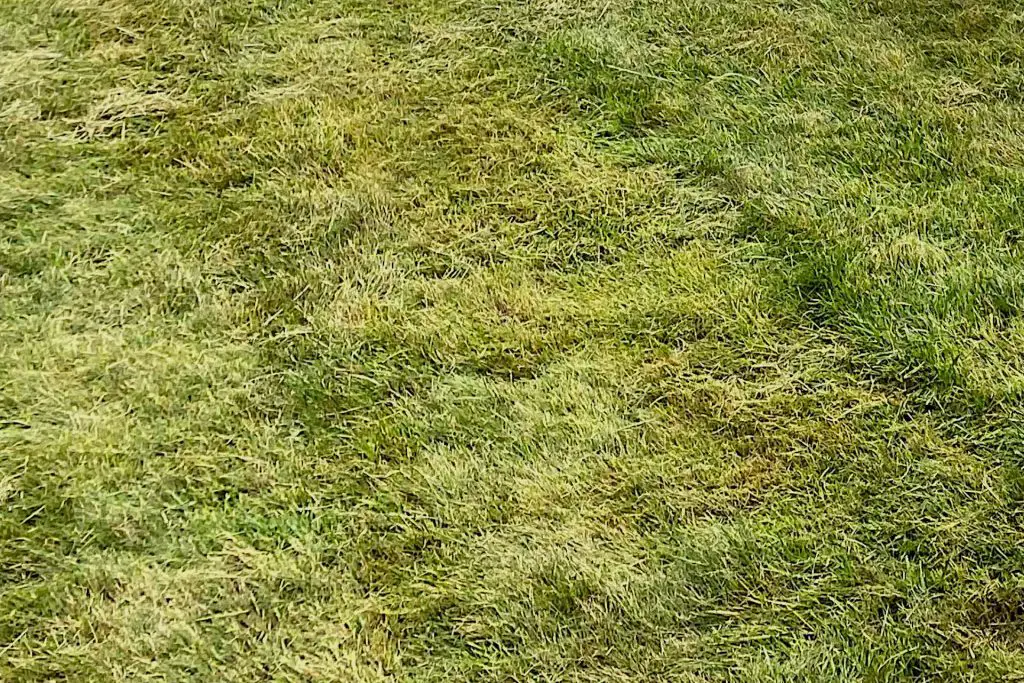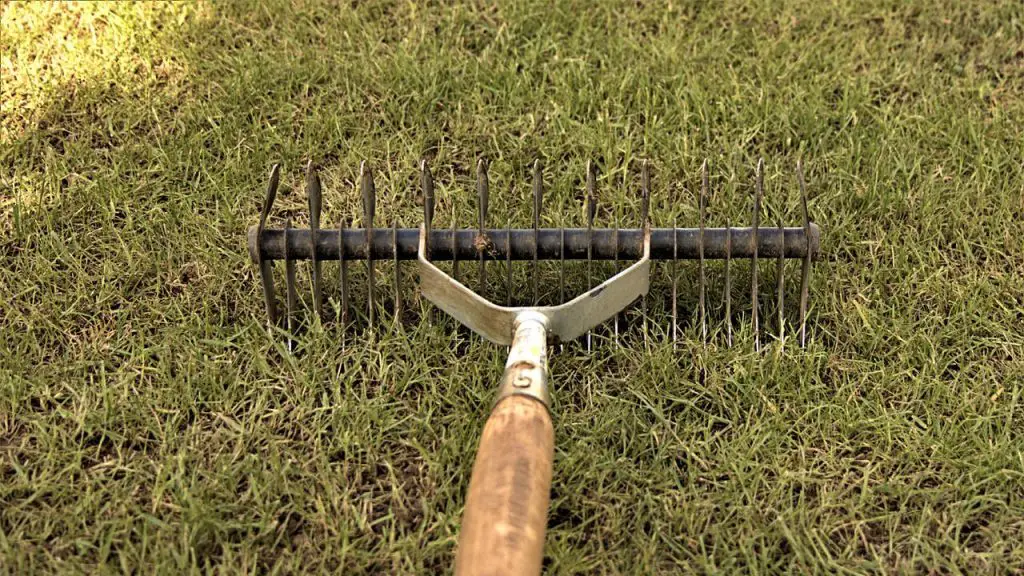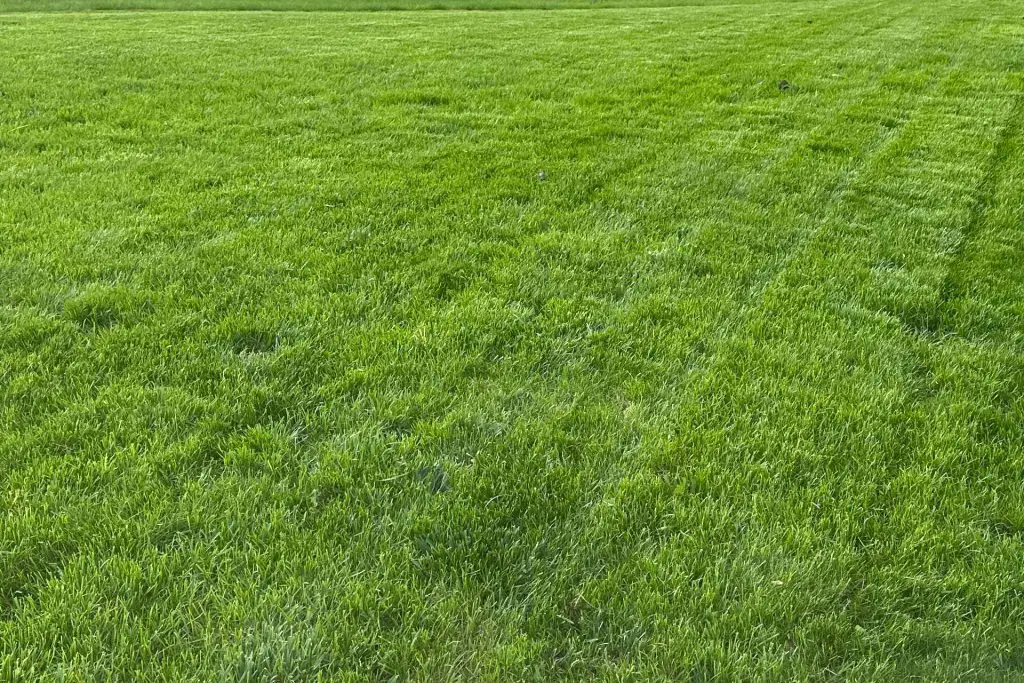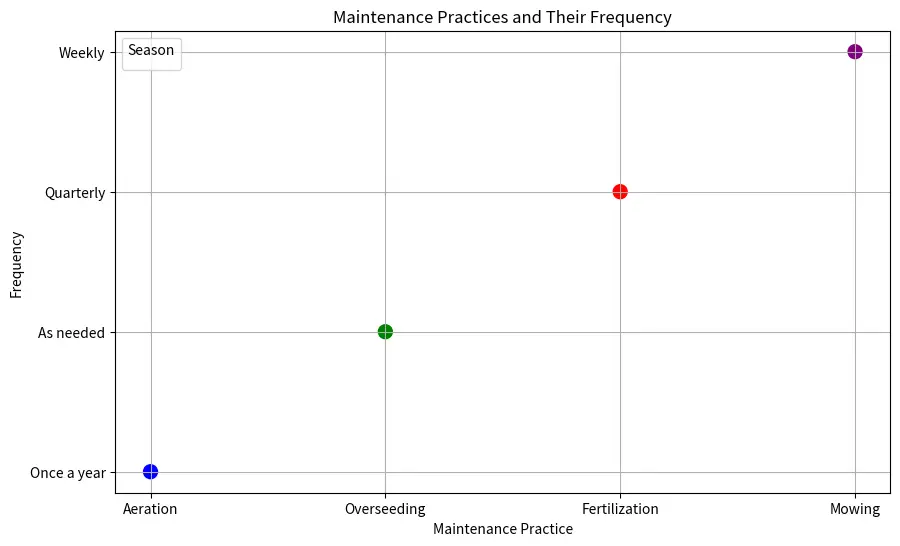Dethatching St Augustine Grass: Unlocking Your Lawn’s Potential
Is your St. Augustine grass looking less than lush these days? You’re not alone. Many homeowners find themselves puzzled by the declining health of their lawns, unaware that the culprit might be lurking right beneath their feet—a dense layer of thatch. Welcome to this comprehensive guide on dethatching St. Augustine grass, a crucial yet often overlooked aspect of lawn maintenance.
Dethatching, sometimes referred to as verticutting or confused with scarifying (a more severe form of dethatching), is not just a buzzword in the world of lawn care; it’s a vital practice that can rejuvenate your lawn and bring it back to its former glory. But hold on, not all grasses are created equal. St. Augustine grass has its unique characteristics and care requirements. This warm-season, sod-forming grass is a popular choice in southern climates, but it also comes with its own set of lawn care myths and lawn care mistakes.
In this article, we’ll delve deep into the world of lawn renovation and lawn restoration, specifically focusing on St. Augustine grass. From understanding the nature of this grass species to the timing and methods for dethatching, this guide has got you covered. We’ll also debunk some common lawn care myths and provide you with lawn care tips that are both eco-friendly and sustainable.

Whether you’re a DIY lawn care enthusiast or someone seeking professional lawn care services, this guide will serve as your go-to resource. We’ll discuss dethatching benefits, risks, and even explore dethatching alternatives. So, if you’re keen on boosting your lawn’s curb appeal and overall health, you’re in the right place.
Stay tuned as we unravel the secrets to achieving a vibrant, resilient St. Augustine lawn that not only looks good but is also disease-resistant and pest-resistant. Your journey to a healthier, more beautiful lawn starts here.
Feel free to navigate through the Table of Contents to jump to specific sections that pique your interest. Let’s get your lawn back on track!
Nature of St. Augustine Grass
When it comes to lawn care, understanding the specific type of grass you’re dealing with is paramount. St. Augustine grass is a warm-season turfgrass that thrives in southern climates. Unlike other grasses, it’s a sod-forming species, meaning it spreads by above-ground stems known as stolons rather than rhizomes, the underground stems common in other grass types. For example, St. Augustine grass in comparison to Centipede Grass, has a much deeper rooting structure and forms a denser carpet.
Characteristics
St. Augustine grass is thus renowned for its lawn density and lawn thickness, making it a popular choice for homeowners who desire a lush, carpet-like lawn. It has broad, flat blades and a rich green color, contributing positively to your lawn’s appearance and lawn value. However, it’s not all sunshine and rainbows; this grass type is susceptible to certain lawn diseases and lawn pests, requiring vigilant pest control and disease control measures.
Climate Zones
St. Augustine grass is particularly well-suited for warm, humid climates. It’s drought-tolerant, salt-tolerant, and can even handle moderate foot traffic, making it a traffic-tolerant lawn care option. However, it’s less shade-tolerant compared to other grass types, so it’s best to plant it in areas that receive ample sunlight.
Comparison of St. Augustine with Other Grass Types
| Grass Type | Climate Suitability | Growth Pattern | Shade Tolerance |
|---|---|---|---|
| St. Augustine | Warm, Humid | Sod-forming | Moderate |
| Bermuda | Warm | Rhizomatous | Low |
| Kentucky Bluegrass | Cool | Bunch-type | High |
| Zoysia | Warm | Both sod-forming and rhizomatous | High |
Questions You Need to Consider
Is St. Augustine the Right Choice for You?: Given its specific care requirements, is it the best fit for your lawn care needs?
Choosing the right type of grass for your lawn is a crucial decision that impacts not just the aesthetics but also the long-term lawn health and maintenance requirements. St. Augustine grass is an excellent choice if you live in a warm, humid climate. Its drought-tolerant and salt-tolerant properties make it ideal for coastal regions. However, it’s worth noting that St. Augustine grass requires a moderate level of maintenance to keep it free from lawn diseases and lawn pests.
If you’re someone who enjoys lawn care as a weekend activity and doesn’t mind investing in lawn care products or lawn care equipment, St. Augustine could be a great fit. On the other hand, if you’re looking for a low-maintenance grass type or live in a cooler climate, you might want to explore lawn care alternatives like Kentucky Bluegrass or Zoysia.
How Does Soil Quality Affect Your Lawn?: Poor soil health can lead to increased thatch buildup. What steps can you take to improve it?
Soil quality plays a pivotal role in the overall health and vitality of your lawn. Poor soil health can lead to a range of problems, including increased thatch buildup, poor water retention, and nutrient imbalances. These issues can make your lawn more susceptible to diseases and pests, thereby increasing your lawn care costs.
To improve soil quality, consider conducting a lawn soil test to identify nutrient deficiencies or pH imbalances. Based on the results, you can apply the appropriate lawn fertilizers and organic soil amendments. Regular lawn aeration can also help improve soil structure, allowing for better water and nutrient absorption.
By addressing these two questions, you’ll be better equipped to make informed decisions that contribute to a healthier, more resilient St. Augustine lawn. Whether you’re a DIY lawn care enthusiast or prefer hiring lawn care professionals, understanding these aspects will help you tailor your lawn care routine effectively.
Knowing the nature of St. Augustine grass is the first step in effective lawn maintenance. Whether you’re into DIY lawn care or prefer lawn care services, this knowledge will guide your lawn care calendar and help you avoid common lawn care mistakes.
Timing for Dethatching
Timing is everything, especially when it comes to dethatching St. Augustine grass. Unlike other lawn care tasks that might be more forgiving, dethatching requires precision. The process can be stressful for your lawn, so it’s crucial to choose a period when your grass is at its most resilient. For St. Augustine grass, this window is typically in mid to late spring.
When to Dethatch St Augustin Grass
The ideal time for dethatching is when the grass is actively growing and the soil is moderately moist. This usually coincides with the spring green-up, a period when the grass breaks dormancy and begins to flourish. Dethatching during this time allows the grass to recover quickly, ensuring that your lawn’s appearance and lawn quality are not adversely affected.
| Month | Suitability for Dethatching |
|---|---|
| January | Not Recommended |
| February | Not Recommended |
| March | Moderate |
| April | Highly Recommended |
| May | Highly Recommended |
| June | Moderate |
| July | Not Recommended |
| August | Not Recommended |
| September | Not Recommended |
| October | Not Recommended |
| November | Not Recommended |
| December | Not Recommended |

Signs Your Lawn Is Ready
- Color: Look for a consistent green color across the lawn, indicating active growth.
- Soil Moisture: The soil should be damp but not waterlogged. Overly dry or wet conditions can make dethatching less effective and more stressful for the grass.
Common Mistakes to Avoid
- Summer Stress: Avoid dethatching during the hot summer months, as the grass is already under stress from heat and potential drought.
- Fall Fertilization: While fall might seem like a good time for lawn tasks, it’s not ideal for dethatching St. Augustine grass due to its growth cycle.
- Overseeding: Having said that, if you are looking to completely rejuvenate your lawn by overseeding then the timing can change as the timing for overseeding will take precedence as the overseeding process will help with the stress felt by the existing grass. It should be noted that you should scarify rather than just dethatch before overseeding.
Being aware of the optimal time for dethatching St Augustin grass allows you to maximize the dethatching benefits while minimizing dethatching risks. Whether you’re planning on DIY lawn care or hiring lawn care services, this timing guide will be an invaluable resource in your lawn care calendar.
Reasons for Dethatching

Understanding the why behind dethatching can help you make more informed decisions about your lawn care routine. Dethatching is not just a cosmetic procedure; it serves several functional purposes that contribute to the overall health and vitality of your St. Augustine lawn.
Thatch Buildup: The Underlying Issue
Thatch is a layer of organic matter that accumulates on the soil surface, consisting mainly of grass clippings, lawn debris, and dead grass. While a small amount of thatch can be beneficial, providing insulation and protection, excessive thatch can create a barrier that hinders water absorption, nutrient uptake, and air circulation.
Pros and Cons of Thatch on St Augustin Grass
| Benefits of Thatch | Risks of Excessive Thatch |
|---|---|
| Insulation | Reduced Water Absorption |
| Soil Protection | Hindered Nutrient Uptake |
| Erosion Control | Poor Air Circulation (breeding ground for fungi) |
Key Reasons for Dethatching
- Improved Water Absorption: Removing the thatch layer allows water to penetrate the soil more effectively, reducing lawn watering costs.
- Enhanced Nutrient Uptake: With the thatch out of the way, fertilizers and nutrients can reach the root zone, making your lawn fertilization efforts more fruitful.
- Preventing lawn fungi from taking hold: Heavy thatch can often be a major cause of various lawn fungi as lack of air circulation can provide a breeding ground for grass diseases
Additional Benefits
- Disease Control: Excessive thatch can harbor fungi and pests. Dethatching helps in effective disease control and pest control.
- Lawn Renovation: Dethatching can be a part of a broader lawn renovation or lawn restoration project, setting the stage for overseeding or lawn replacement.
By tackling the thatch issue, you’re not just improving the look of your lawn; you’re enhancing its health and making your lawn care products and lawn care equipment more effective. Understanding the reasons for dethatching can guide your lawn care calendar and help you avoid lawn care myths and lawn care mistakes.
Methods of Dethatching

Dethatching is more than just a one-size-fits-all operation. There are various methods and tools available, each with its own set of pros and cons. Knowing the right approach for your St. Augustine lawn can make a significant difference in both the effectiveness and the dethatching costs.
Manual vs. Mechanical Dethatching
- Manual Dethatching: This method involves using specialized dethatching tools like thatching rakes. It’s labor-intensive but offers precise control. Ideal for smaller lawns or areas with moderate thatch buildup.
- Mechanical Dethatching: For larger lawns or severe thatch problems, mechanical dethatchers or power rakes are more efficient. These verticutting machines can be rented or purchased, and some homeowners even opt for professional dethatching services.
Comparison of Dethatching Methods
| Method | Efficiency | Cost | Suitability for Large Lawns |
|---|---|---|---|
| Manual Dethatching | Low | Low | No |
| Mechanical Dethatching | High | Moderate to High | Yes |
Factors to Consider
- Dethatching Depth: The depth to which you dethatch can impact your lawn’s recovery time. A shallow depth is less stressful but may require more frequent dethatching. Scarifying would remove thicker layers of thatch in one go.
- Dethatching Frequency: How often you need to dethatch depends on various factors like soil quality, climate, and lawn usage.
Tips for Effective Dethatching
- Preparation: Before you start, mow your lawn to a lower height to make the dethatching process easier.
- Post-Care: After dethatching, consider lawn overseeding and lawn fertilization to expedite recovery and improve lawn quality.
Choosing the right dethatching method is crucial for achieving the best results. Whether you’re a DIY lawn care enthusiast or prefer to hire lawn care professionals, understanding these methods will help you make an informed decision, optimizing both lawn care benefits and costs.
Post-Dethatching Care

Congratulations, you’ve successfully dethatched your St. Augustine lawn! But the work isn’t over yet. Proper post-dethatching care is essential to ensure that your lawn recovers quickly and benefits fully from the procedure.
Immediate Actions
- Watering: Your lawn will be thirsty after dethatching. Make sure to water it thoroughly to help the soil and grass recover. This is a crucial step in lawn watering.
- Fertilization: Apply a balanced fertilizer to replenish nutrients in the soil. This is where your lawn fertilization type and lawn fertilization application methods come into play.
Table: Post-Dethatching Care Schedule
| Task | Timing | Notes |
|---|---|---|
| Watering | Immediately | Deep watering to encourage root growth |
| Fertilization | 2-3 days post | Use a balanced, slow-release fertilizer |
| Mowing | 1 week post | Resume regular lawn mowing schedule |
| Overseeding | 1-2 weeks post | Optional, based on lawn density |
Long-Term Maintenance
- Weed Control: After dethatching, your lawn is more susceptible to weeds. Consider applying a pre-emergent herbicide for effective weed control.
- Monitoring: Keep an eye out for signs of lawn diseases and lawn pests. Early detection and treatment are key to disease control.
Additional Tips
- Lawn Care Professionals: If you’re not comfortable with post-dethatching care, consider hiring lawn care professionals. They can provide specialized lawn care services tailored to your lawn’s needs.
- Eco-Friendly Options: For those interested in sustainable lawn care, there are eco-friendly lawn care products that can be used post-dethatching.
Adhering to these guidelines, you’ll not only speed up the recovery of your lawn but also enhance its long-term health and beauty. In truth, a post-dethatching care regimen should be a staple in your lawn care calendar.
Additional Maintenance Practices
Dethatching is a pivotal step in lawn care, but it’s not the only one. To maintain a lush, green St. Augustine lawn, you’ll need to incorporate other additional maintenance practices. These practices complement dethatching and contribute to a well-rounded lawn care routine.
Complementary Practices
- Aeration: Aerating your lawn is s process that involves perforating the soil to allow air, water, and nutrients to penetrate down to the roots. It’s a beneficial practice that complements dethatching, especially in terms of soil health and lawn growth.
- Overseeding: If your lawn looks sparse after dethatching, consider overseeding your lawn or hydroseeding over the existing lawn to improve lawn density and lawn thickness.
Maintenance Practices and Frequency
| Maintenance Practice | Frequency | Season |
|---|---|---|
| Aeration | Once a year | Spring/Fall |
| Overseeding | As needed | Spring/Fall |
| Fertilization | Quarterly | All Seasons |
| Mowing | Weekly | Growing Season |

Seasonal Care
- Winterization: Prepare your lawn for winter by applying a winter fertilizer and reducing the lawn watering frequency.
- Spring Green-Up: As the weather warms, increase watering and consider a light application of fertilizer to kickstart growth.
Sustainability
- Organic Lawn Care: Use organic fertilizers and pesticides for a more eco-friendly lawn care approach.
- Water Conservation: Invest in drought-tolerant lawn care practices like installing a rain barrel or using drought-resistant grass varieties.
Incorporating these additional maintenance practices will not only enhance the effects of dethatching but also contribute to a healthier, more resilient lawn. Again, these practices ought to be the building blocks of a comprehensive lawn care calendar, designed to keep your St. Augustine lawn in peak condition year-round.
The Wrap-Up: Dethatching St Augustine Grass
Hopefully, you will have found this comprehensive guide to dethatching St. Augustine grass helps you with the process. You should now you’re equipped with the knowledge to make informed decisions for your lawn. From understanding the unique nature of St. Augustine grass to the timing for dethatching and post-dethatching care, this guide has covered it all.
Key Takeaways
- St. Augustine Grass: This grass type thrives in warm climates and has specific needs that differ from other grass species.
- Timing: The best time for dethatching is during the growing season when the grass can recover quickly.
- Reasons for Dethatching: Removing the thatch layer improves soil health, lawn health, and allows for better water and nutrient absorption.
- Additional Maintenance: Practices like aeration and overseeding complement dethatching and contribute to a well-rounded lawn care routine.
Future Steps
- Lawn Care Products: Invest in quality lawn care equipment and products for effective dethatching and maintenance.
- Lawn Care Myths: Be wary of common misconceptions and lawn care mistakes that could hinder your lawn’s potential.
Chart: Your Year-Round Lawn Care Plan
| Month | Task to Focus On |
|---|---|
| January | Winterization |
| April | Spring Green-Up |
| July | Summer Stress |
| October | Fall Fertilization |
Whether you’re a homeowner looking for DIY lawn care tips or someone considering lawn care services, this guide serves as a valuable resource. It’s a one-stop shop for all your St. Augustine grass needs, designed to help you achieve a lawn that’s not just good-looking but also healthy and resilient. Thank you for trusting this guide as your go-to resource for St. Augustine grass care. Here’s to a lawn that makes you proud!
